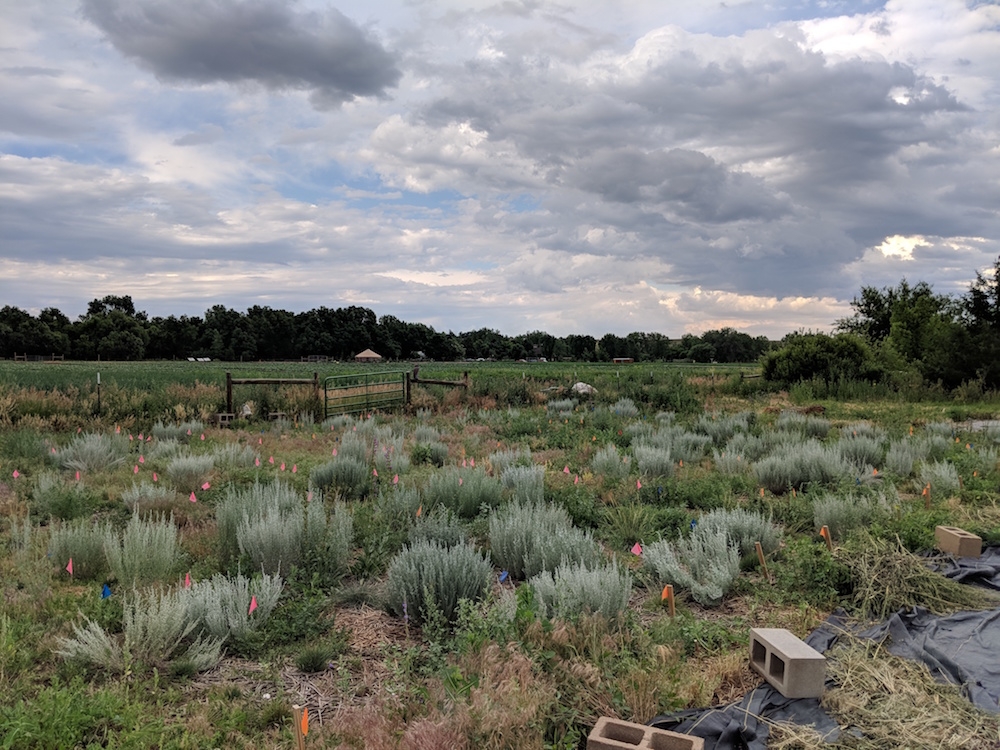Shortgrass Prairie Restoration Experiment
This spring was the first growing season of my prairie restoration experimental research plot at Chatfield Farms. Millions of pounds of seed are planted every year for ecological restoration and the demand for native seed exceeds its supply. I am interested in understanding how the source of seeds used in restoration relates to plant performance.
What performs better, seeds from cultivated plants or wild-collected seeds? For wild-collected seed, how does the environment from where they were collected relate to their performance (size, growth rate and reproductive output) at the field site? Do plants from more similar environments to Chatfield Farms perform better than plants from different environments? Are these relationships the same across many species, or do they vary among species? The results from this experiment will help land managers and restoration practitioners to choose appropriate seed sources to maximize restoration success.
To answer my research questions, I conducted an experiment on five study species commonly used in shortgrass prairie restoration: prairie sagewort (Artemisia frigida), blue grama (Bouteloua gracilis), prairie Junegrass (Koeleria macrantha), dotted blazing star (Liatris punctata), Rocky Mountain penstemon (Penstemon strictus) and Sandberg bluegrass (Poa secunda). For each species, I planted seeds from six wild-collected populations across the western U.S. and from commercially available cultivated seed.
I am tracking growth stage and life stage of each individual plant for two growing seasons, and biomass at the end of the experiment. With more than 1,000 plants involved, volunteers were integral in every step of my experiment: planting seed and repotting seedlings in the greenhouse, plot set-up and construction, planting seedlings into the ground and assisting with weeding and data collection.
Out of all the different types of measurements I am collecting, I am especially interested in phenology. Phenology is the timing of when organisms progress through their life stages or life cycle events. Plants are known to alter when they start leafing, flowering and set seed in response to environmental conditions. However, some of their phenology is also genetically determined – e.g. plants from environments with shorter growing seasons may always flower earlier than plants from environments with longer growing seasons. If some plant populations are not able to alter their phenology enough to keep up with the pace of climate change and the environmental conditions at the restoration site, then they may die out in the future, leading to restoration failure.
This blog post was written by Katherine Fu, Ph.D. student at University of Colorado Denver. Katherine is planning a career in plant ecology and conservation. Specifically, she is interested in focusing on research questions related to restoration, plant communities, succession and plant/animal interactions.
Gallery







Add new comment